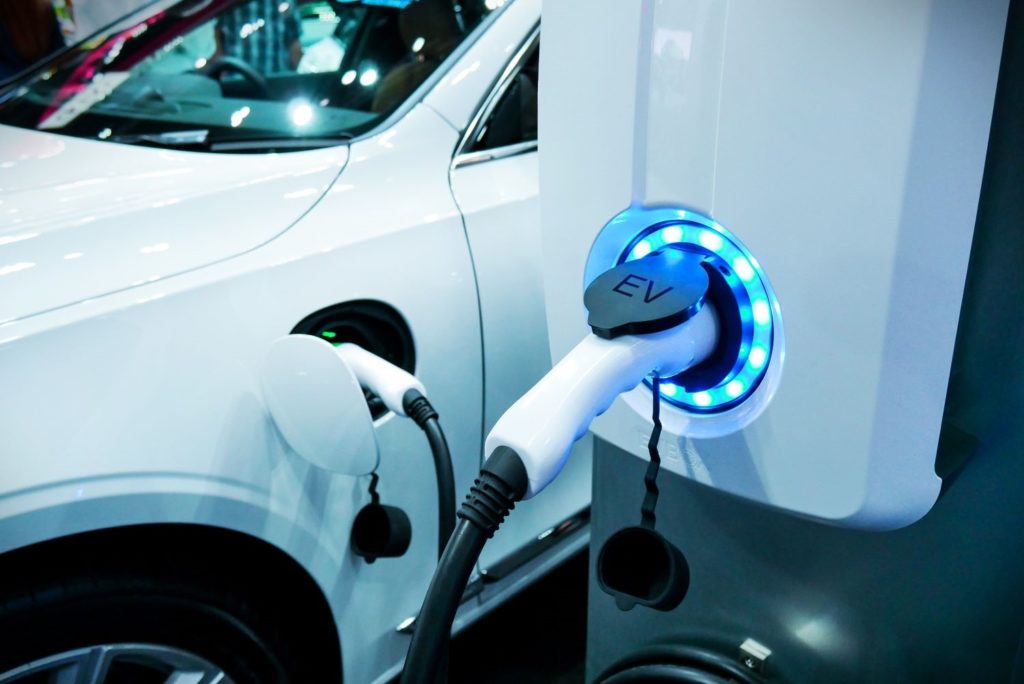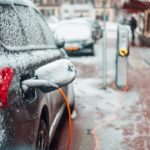The simple answer is no–electric cars don’t use motor oil. Unlike internal combustion engines, electric cars are powered by electric motors that don’t require lubrication from motor oil. These vehicles also have a different drivetrain, which eliminates the need for periodic oil changes. That said, electric vehicles (EVs) still use transmission (direct-drive unit) lubricant, coolant, brake fluid, and windshield washer fluid, all of which must be checked and replaced on a regular basis.
What Fluids Do Electric Cars Need?
While you don’t need to put oil in your EV, you’ll still have to check other fluids in its system during maintenance. Check your owner’s manual for your vehicle’s maintenance schedule.

Transmission (Direct-Drive Unit) Lubricant
Most EVs do not have a typical, multi-speed transmission, but they do have a direct-drive unit that houses a single-ratio gearset. The fluid in this unit needs to be checked during your EV’s maintenance. You don’t need to replace the lubricant that often, but you still need to keep an eye on contaminants that can degrade the lubricant. Consult your EV’s owner’s manual to see whether you need to change the direct-drive unit lubricant in your EV’s system.

Coolant
Coolant is used to prevent the battery and other high-voltage electronics from overheating. An electric pump circulates the coolant through the battery and some electronics. Then the radiator releases heat from the coolant to the outside air to complete the cooling loop. When it comes to adding or replacing coolant in your car, make sure to check the manufacturer’s recommendations.
Brake Fluid
EVs’ brake systems still use brake fluid to operate the brake pads and discs like conventional cars. If the brake fluid isn’t regularly flushed, it can absorb water from air over time and corrode the brake system. Generally, brake fluid should be replaced every 25,000 miles. However, this fluid can degrade before then, so make sure to check your system thoroughly.
Windshield Washer Fluid
The windshield washer fluid needs to be refilled when it runs out. The refilling period depends on how much washer fluid you use. You might have to refill your EV’s washer fluid sooner if you’re constantly using it to clean the windshield.
Can Electric Cars Overheat?
The battery and some of the other high-voltage electronics in an EV can overheat if the cooling system isn’t working properly. Early EV designs used passive or forced air cooling systems, which became obsolete when newer liquid cooling systems were introduced. These cooling systems circulate coolant throughout the battery and electronics to prevent overheating. Heat pumps were also added to modern EVs to maintain the battery’s operating temperature, even in colder driving conditions. Thermal management is the term used to describe the different kinds of cooling procedures for EVs.

Do Electric Cars Have Power Steering Fluid?
No. EVs have an electric power steering system that uses a motor rather than a hydraulic pump. Conventional power steering systems are powered by an internal combustion engine. The engine has to run continuously in order to operate the hydraulic pump that feeds the system with power steering fluid. The mechanical draw on the engine can result in a loss of horsepower and poor fuel economy. This isn’t the case for an electric power steering system that draws its power from the car’s electrical system, not the engine. In other words, because EVs don’t have conventional power steering systems, they don’t need power steering fluid.
How to Charge an Electric Car
Charging your EV is fairly simple. All you have to do is plug its socketing cable into a charging outlet. EVs like the E-Golf, Kona, and I-PACE use type 2 socketing cables that are compatible with most public chargers. There are currently 46,448 public charging stations across the country. It might be challenging to drive an EV if you don’t live in a state that has plenty of public charging stations. Fortunately, you can set up your own charging station at home to avoid the inconvenience. Charging your electric vehicle at home can be as simple as plugging it into a 120-volt wall outlet in your garage or as complicated as using a 240-volt charger. The choice is up to you.
Any information provided on this Website is for informational purposes only and is not intended to replace consultation with a professional mechanic. The accuracy and timeliness of the information may change from the time of publication.




















